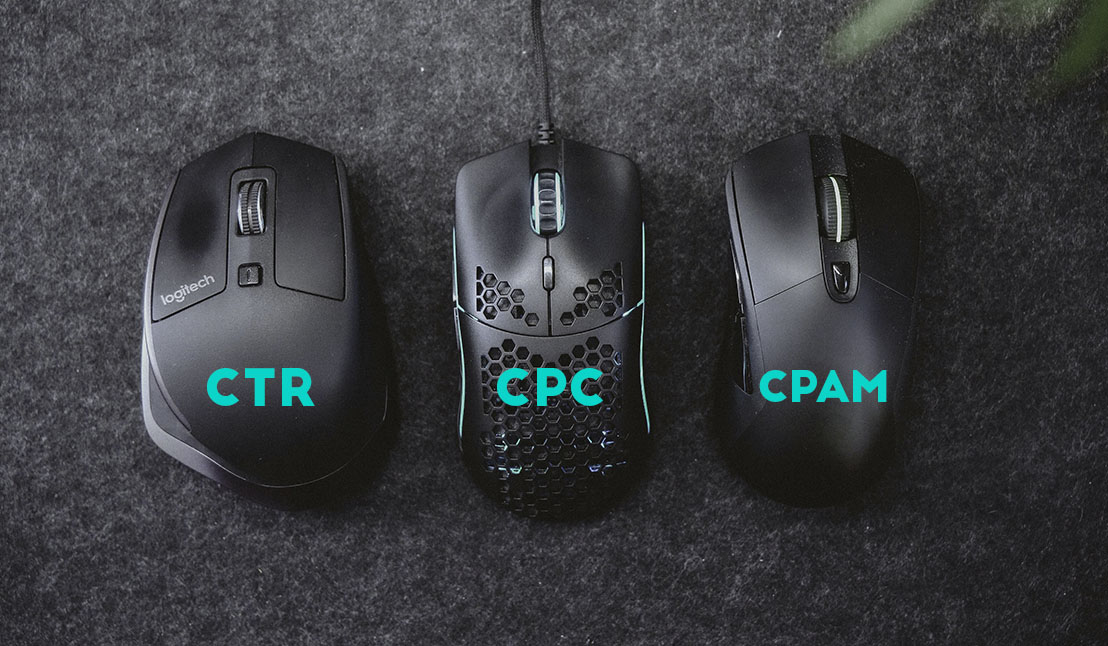 Marketing 360º
Marketing 360º
CTR, CPC and CPA – What are they?
A very common trend in the marketing world is using complex terms, and that is why lists like our digital marketing glossary are increasingly necessary. Let’s start with the fact that there are many acronyms. Such is the case of CPA, where the acronym stands for cost per acquisition. Our duty as marketing experts is to know each and every one of these terms.
This time we present 3 terms or sales models that can be confused not only because their topics overlap, but also because of their acronyms. Don’t worry, we promise that by the end of this text you will know each one perfectly.
What is CTR or the Click-Through-Rate?
This term stands for Click-Through-Rate, which refers to the number of clicks a link gets. According to Marketing4ecommerce, it is one of the most popular and well-known concepts in the digital marketing era and one that every marketer should know and know how to use.
Through the CTR it is possible to measure how effective an online campaign has been as it shows us how interested the public were in our ads, whether on Google, or on other search engines or social networks.
The CTR can be measured using tools such as Google Search Console, however, it is also possible to calculate it using a very simple formula:
To get the CTR percentage we need to divide the number of clicks our link got by the number of impressions (i.e. the number of times the link was viewed); this result is multiplied by 100 and then we have our Click-Through-Rate.
And this factor is very relevant as it can determine our SEO positioning. The more attractive our link is, the higher the number of clicks, which will translate into visits to our website.
This metric is not a value that exists and we have to learn to live with it, but we can also use some tactics to make it grow, such as:
- Create a good impression with our advert using a good title, which is attractive and informative.
- Use appropriate keywords that will help us get better positioning.
- A call to action, or CTA marketing (call to action) always helps to get clicks on our link.
- Know how to manage investments, putting a higher amount at the beginning and gradually decreasing it as our positioning improves.
- Creativity is the limit. Find a way to catch our audience’s eye and make them want to visit our website.
CPC – What does it mean?
Now that we know what CTR is, let’s get to know CPC. In this case, the term CPC comes from the acronym Cost Per Click. Like the previous term, it is related to the clicks on a link, but it should not be confused with the previous term, because while the CTR refers to the total number of clicks on a link, the CPC focuses on the investment needed for each click.
The CPC allows us to calculate what was the conversion rate in an ad campaign, as it will help us to know what the cost was invested in each user who visited a link. Similarly, this model will allow us to capture traffic to our websites, and if not, to identify it.
Remember that the cost per click is not fixed but tends to vary depending on the success of an ad or a website. Let’s say we have two ads with the same investment put into them, but over the course of a week, the one that is more eye-catching gets 300 clicks and the other only 50, so the cost per click for the second ad will be much higher than for the first one.
In short, the lower our CTR the higher the CPC, and vice versa, if our CTR increases the CPC will decrease. Put in simpler words, the more people visit us, the lower the cost per click will be, but if few people click on our link, the cost per click will skyrocket.
It may seem quite obvious but to avoid any miscommunication, the simplest way to calculate the CPC is this: divide the total cost by the amount of clicks.
Good CPC optimisation will help us drive traffic to the website and save us money. As well as the CTR, some tactics that can improve our CPC could be using eye-catching ads or using the right keywords to avoid audiences from just ignoring them.
CPA and its features
Again, these are acronyms, which stand for the term Cost Per Acquisition. The CPA refers to an average between the investment made and the number of conversions achieved, which translates into the cost per sale made. It is a model mainly used in online sales ads.
The difference between CPC and CPA is that the former refers to the investment used to get one click, while in the latter there may be several clicks, but it will not represent an investment until the moment a purchase is made.
Here a fixed price can be set, which will only be paid at the time the sale is completed, or a variable one where a commission is paid regardless of the number of conversions that take place.
CPA tends to be one of the most important aspects when calculating our Return of Investment (ROI), and it works very well for short-term sales.
CPA is often used in display campaigns, such as banners, adverts or email marketing, where the goal is always to achieve the highest possible number of sales. This is why this sales model is also often used in retargeting campaigns or to close in on sales in someone’s basket.
There are also many other terms and models such as CPM, CPL or CPI, but we’ll talk about these another time.


